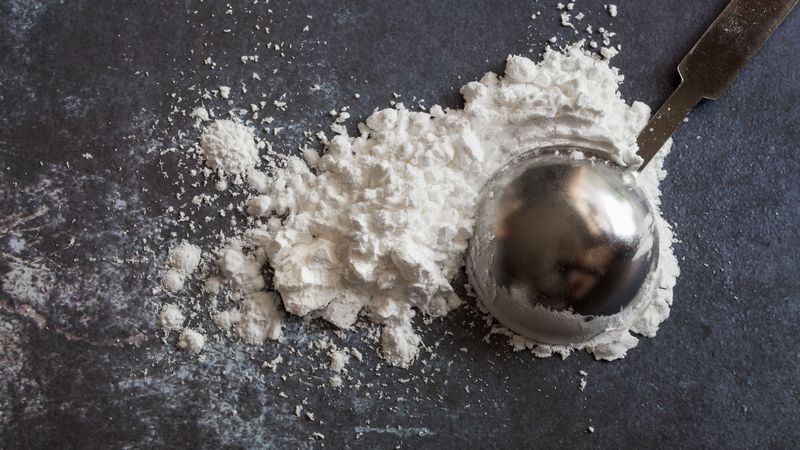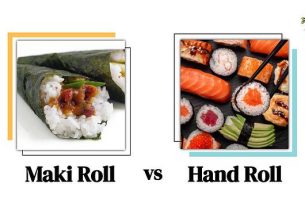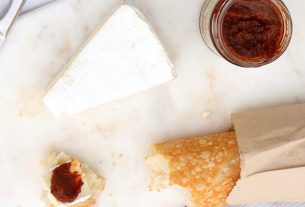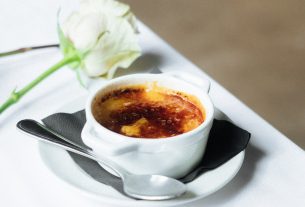If you have used cornstarch in frying chicken before, the thoughts of what could make a best substitute for cornstarch could have come to your mind. Potato starch is the best substitute for cornstarch because of its right structure that helps to provide a rigid and crispy coating just like cornstarch does. Furthermore, potato starch does not taste distinct and it is considered gluten-free like cornstarch. You can heat potato starch to a high temperature and it will not burn, this makes it very perfect for use in deep frying your food.
What Is Cornstarch?
Gotten from corn kernel as a starch, cornstarch is an ingredient that is widely used in culinary and it can be found on the list of ingredients for sauces and soups where you can use it as a to thicken food.
Frying is one of those common ways you can use cornstarch. As a result of the unique consistency, it helps anything you want to fry to have crispy coatings whether it is onion rings or chicken wings. Cornstarch contained in it a lot of carbs and calories because it is majorly starch. You cannot expect too much from it when you consider the nutritional value.
A cup (128g) of cornstarch contains about 488 calories. Cornstarch also contains 117g carbohydrates, 0.3g protein, and 0.1g fat. In the case of minerals, a cup contains 3.8mg potassium, 11.5mg sodium, and 3% daily value of iron. If you have a problem with cholesterol levels and blood sugar, eating meals that contain cornstarch is not recommended for you.
Why Does Cornstarch Get Crispy When Fried?
Food dipped into a coating can be fried and the coating can also be skipped. For instance, deciding to fry chicken wings directly in oil without coating. There will be a crunch on the chicken and it will also get crispy but it will not give it a much crisp as cornstarch will do. Coating your chicken with cornstarch will leave a golden gloss on the outer layer and that will protect the meat by making it delicious and juicy.
In other words, you will follow the more delicate method to fry your food when you fry it by coating it in cornstarch, helping to maintain the food’s qualities. The science concept behind the coating getting your food crispy is that when cornstarch that is a starch gets mixed with liquid for the coating, the granules will absorb the content of water and the size will expand by the time it touches hot oil. This is a similar thing that happens when you apply starch directly to the food’s moist surface. The cornstarch’s moistened particles get separated from one another and the water present with the granules tends to evaporate quickly when you apply heat. The particles of the starch later stop moving and get locked in place to form crunchy crusts covering your food.
The starch’s molecular structure determines the coating’s consistency. Starches such as cornstarch contain two kinds of molecules; amylopectin and amylose. There is a ration between the molecules and they differ depending on the starch’s origin. Amylopectin and amylose usually combine to make the coating crispy. However, the amount of amylose contained in your starch determines the extent of the crunchiness of the fried food. You can consider cornstarch to be among the top starches that you can use for frying because its amylose is about 28%.
Potato Starch: The Best Cornstarch Substitute
Cornstarch has many alternatives, but they do not all work well when you use them to fry food. Potato starch can still be classified as the best replacement for cornstarch because it is very similar to it.
What is Potato Starch?
You can get potato starch from potato plants’ roots. Potatoes get crushed so that its starch granules will separate from within the cells. You will then dry these starch grains to get the potato starch. Its starch granules contain a slightly oval rounded shape and they have larger sizes than all other starch varieties.
A cup of your potato starch contains about 571 calories which are considerably high in 160g of the starch. A cup contains 0.5g fat, 113g carbohydrates, and 11g protein. Potato starch contains a higher value of nutrition than cornstarch and one cup contains 1601mg potassium and 88mg sodium. Potato starch also contains 60% daily value of vitamin B-6, magnesium, iron, vitamin C, and calcium.
Why Is It the Best Substitute for Cornstarch?
If you want to get your meat covered with a crispy coating that will protect your meat and also help to keep the juicy inside, you should use cornstarch and this is thanks to the high content of amylose contained in the cornstarch granules. Whenever you want to get the best alternative to cornstarch, you need to essentially consider getting a substitute that is as close to cornstarch’s molecular structure as possible and this is how you can achieve a similar effect like cornstarch.
- High-temperature endurance: We do not recommend you to cook your potato starch for a very long time, you can cook it at a very high temperature to give you great results. You can consider this another reason to use potato starch to deep-fry your food.
- Neutral taste: Neutral or bland taste, potato starch will not give you a distinctive taste and that makes it excellent as a substitute for cornstarch. Despite cornstarch being gotten from corn kernels, it doesn’t taste much. This means that potato starch does not affect the fried food taste but will only give it a crispy coating.
- The ratio will not be a problem: You can use potato starch to substitute cornstarch in a simple ratio 1:1 as against some others that you have to start changing the ratio when considering using them as a substitute. With the 1:1 ratio, you can easily substitute potato starch for corn starch and vice versa.
- Potato starch is classified as a gluten-free product: Exactly like cornstarch, potato starch is classified to be gluten-free and this will allow it to be a brilliant substitute for cornstarch, especially for those who are looking for gluten-free products for coating. Gluten-free coatings are usually lighter than those that include gluten because gluten usually attracts fat and moisture. When you use cornstarch or potato starch, your coating will be crispy and light as compared with being heavy and oily when you make it with ingredients that have a high content of gluten.
- Amylose content: When compared to some other varieties of starch, potato starch contains a higher content of amylose between 20 and 22%. It can easily go into competition with cornstarch when you want to consider creating getting your fried food to have a brittle coating.
Potato Starch vs Cornstarch Vs: Are They Always Interchangeable?
Potato starch and cornstarch’s primary difference is in how they both got derived. Potato starch is derived from root starch while cornstarch is from corn kernel and that makes it an excellent grain starch. Apart from using them interchangeably for frying food, potato starch and cornstarch can both be used in sauces and soups to thicken foods. You, however, have some rules when using these two starches.
You cannot substitute potato starch for cornstarch for a long process of cooking, you will need to add it into the meal as you move to the end of the cooking. You will need to cook cornstarch for longer so that you can prevent it from giving a chalky flavor.

Two Other Cornstarch Alternative for Frying
We have several other alternatives to cornstarch that can be used to thicken gravies, soups, and baking cakes and cookies. However, the substitute list gets reduced when you want to select alternatives for frying.
- Rice Flour: This variety is considered much lighter when compared to the all-purpose flour that will be discussed below and it will make a crunchier and lighter coating than some other flour replacement for cornstarch. Contained in rice flour is a lesser content of starch and you will need to double the ratio as a substitute for cornstarch in your recipe. Rice flour is considered gluten-free because it is only made from rice and this makes it a great substitute for cornstarch.
- All-purpose Flour: This is a very popular coating that is used to cook at home. It is the blend of two types of wheat; the hard and the soft. It is not gluten-free and will not make a good substitute for cornstarch in that area. If, however, you wouldn’t mind having a minute quantity of gluten inside the food, this type is an excellent choice for you. It does not possess a particular pronounced taste and you may use it blank or add various spices for the desired flavor.
In case you want to substitute all-purpose flour for cornstarch, you will have to use a double ratio of the flour because it contains a lesser content of starch and will take more of it to get the desired result and consistency when you mix with liquid. Endeavor to use two cups of the flour or more if your recipe demands for one cup of the cornstarch.


